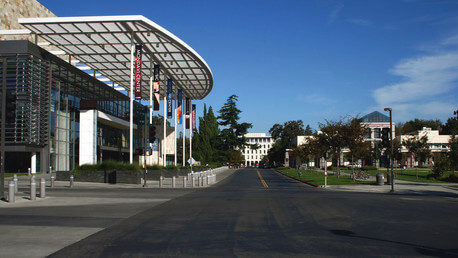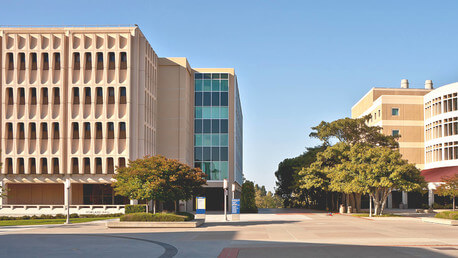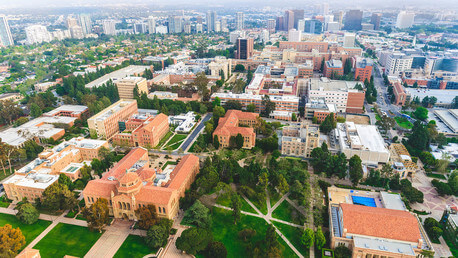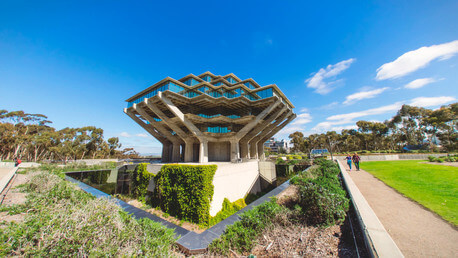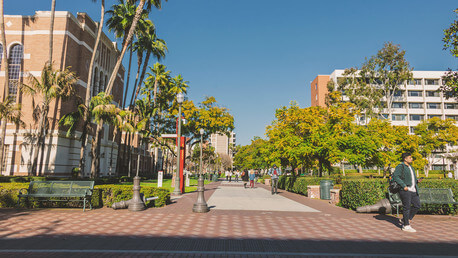Academics
Key Academic Stats
Highest Degree Offered
Bachelor's
Total Number of Students
1,099
Total Number of Undergrads
1,080
Learning Options
- ROTC Army
- Study Abroad
- Honors Program
Student:Faculty Ratio
10:1
US National: 21:1Classroom Sizes
0
100
81%
Graduate in 4 Years US National: 28%
0
100
88%
Graduate in 6 Years US National: 52%
Faculty Overview
0
100
96%
Faculty With Terminal Degree US National: 36%
Gender
Ethnicity
What Students Are Saying
Scripps is no Harvey Mudd on the rigor scale, but academics are far from easy. This is definitely a college to which one goes for learning, not for partying. I made most of my best friends while bonding over homework assignments and hanging out in office hours. Professors make themselves available for help and encourage group work. As one of my professors pointed out, very few papers are published by a single individual.
Irina from San Rafael, CA
The humanities classes at Scripps are usually discussion-based with around 12-15 students per class. Sometimes classes like ECON51 or ECON52 may be larger, but usually no more than 25 people. My favorite thing about classes at Scripps is that professors give us space to learn, by letting us facilitate classroom discussions and work on creative projects. I love the individualized attention I get from my professors. Classes are challenging and people do bomb their papers or exams once in a while, but individualized feedback from professors and extra credit opportunities do make up for it. Scripps also has a wonderful tutoring program that pays qualified students to tutor their peers. My econ tutor actually became one of closest friends!
Current Student
The classes are definitely not easy, but if you're willing to work hard it's not impossible to get an A. Obviously, the rigor depends on the courses and your own abilites, but the professors definitely expect a lot from you.
Alex from New York City, NY
Scripps is very accademically challenging but has incredible resources for help. Teachers expect a lot from you, but also are always willing to help. They have mandatory office hours twice or three times as well and are also all available by appointment. Class sizes are so small (average is 15 students) so teachers know your name and really want you to succeed. There are also free tutors for almost every subject, a writing center, and a langauge lab. The academic environment is not competitive in any way which creates a really good place to learn where everyone feels comfortable and wants to help eachother out rather than compete with them.
Haley from Seattle, WA
The workload is what you make of it. You can take the average course load of four class or you can take five or more classes. The difficulty you will have really depends on how hard your classes are (and also if they come with lab), whether you are committed to extracurricular activities (and also how many), and whether you also have work study. Some students choose to challenge themselves and take four difficult classes (chemistry, etc.). Other students take four easy classes (anthropology, etc.), but choose to engage themselves in a number of extracurricular and outside activities, such as intermural sports or an internship in Los Angeles. Either way, Scripps students are typically overinvolved and I have never met anyone who had a truly â??boringâ?? or â??easyâ?? schedule.
Nevertheless, I find that most Scripps students can easily find a good balance between work and play. It should be noted that the professors at Scripps and the Claremont Colleges are excellent. They are always willing to help students, but communication is key. If you take the initiative to attend office hours before exams and send emails when absent, you will get a lot out of the small liberal arts college experience. Classes tend to be small (anywhere from five to twenty-five students, though introductory science classes tend to have more, say about fifty students), so expect to get to know your professors and classmates fairly well. Your participation or lack thereof will be noticed!
Nevertheless, I find that most Scripps students can easily find a good balance between work and play. It should be noted that the professors at Scripps and the Claremont Colleges are excellent. They are always willing to help students, but communication is key. If you take the initiative to attend office hours before exams and send emails when absent, you will get a lot out of the small liberal arts college experience. Classes tend to be small (anywhere from five to twenty-five students, though introductory science classes tend to have more, say about fifty students), so expect to get to know your professors and classmates fairly well. Your participation or lack thereof will be noticed!
TEAorCOFFEE
I came from a tiny, private, independent high school. There were 60 students in my graduating class, and it was very academically-focused. In comparison with my high school experience, Scripps has been a little bit less difficult. But I am balancing my academic life here with a busy extracurricular schedule (two jobs and club leadership), and so the rigor is definitely enough to keep me on my toes. My favorite part about Scripps's academics is that I still have the same close faculty-student relationships that I had at my small high school.
Jasmine from Hillsborough, CA
I can't give Scripps 5/5 because (like anywhere), there are some courses which are easier than others. However, there are many, many courses which will push you out of your comfort zone, but if you're interested in the subject, you'll be happy to put in the work.
Current Student




